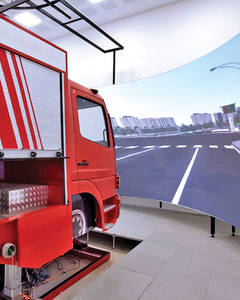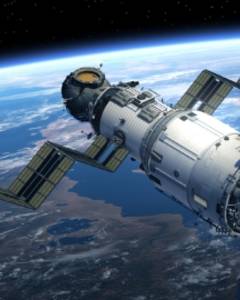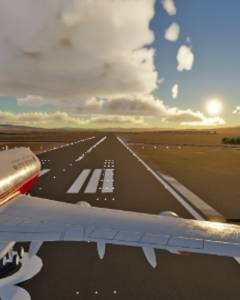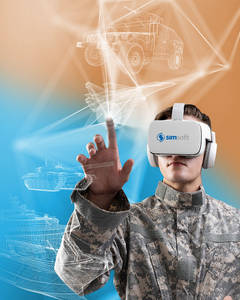Convoy Simulator
The Convoy project is a system that provides training for armored and unarmored vehicles and weapon systems in a controlled and realistic virtual simulation environment. The system allows more than one simulator systems to run in the same scenario simultaneously. The simulator provides basic and scenario based training using various virtual scenarios. With realistic vehicle dynamics and motion platforms, the simulator provides the user the feeling of controlling a real vehicle. Measuring trainees’ reactions in unexpected conditions, improving their ability of decision making under critical conditions by accomplishing firing and weapon usage while the vehicle is moving and stopped, learning the mistakes that are intolerable in real life through training repetitions. Created simulator systems include effects and scenarios in a high fidelity level of realism.
One of the most noteworthy features is the simulation environment generated by multiple projectors attached to the physically modeled vehicles. Both the trainees driving the vehicle and the trainees using the weapons will truly feel that they are in a battle environment.



Detailed Information
Photos
Videos
Virtual Environment
Multiplayer architecture allows training multiple personnel on the same scenario simultaneously.
Due to the realistically modeled vehicle hardware, trainees feel life-like movements, rotations, and impacts of the vehicle. Repulsion enhanced, laser focused weapon hardware provides a realistic shooting experience for the trainees. Giant simulation screens created by multiple projectors and realistic sounds make the trainees feel like they are in a real battle environment.
Artificial Intelligence
The intelligentized convoy simulator adds artificial intelligence to control the movement of individuals, crowds and vehicles in personal and public events.
HLA (High Level Architecture)
The Convoy Training Simulator implementation is HLA compliant, allowing a scalable environment. HLA is a specification that provides an infrastructure for integrating multiple simulation systems and allows for the creation of distributed simulation systems.
Common Scenario Training
Multiple drivers training in a common scenario
Driver and shooters training in a common scenario
Training of multiple groups
Team evaluation
Driving Simulator
Driving training in rural and urban environments
Use of real vehicle mechanics
Advanced I/O usage
Integrated 6 DOF motion platfor
Shooting Simulator
Various types of machinegun/bomb launcher simulations
High fidelity ballistic modelling
Flareback future
Tactical Simulation
Pedestrian behavior in urban environment
Traffic simulation
Simulation of computer controlled forces
Terroristic acts
Crowd behavior models
Mission and planning management
Common scenario environment
Display System
Human animations
Multichannel support
Special effects
Explosion
Smoke
Fire
Dust
Night vision and thermal camera
Environment conditions
Rain, snow, fog
Sun, moon, stars
Scenario Creation and Management Tool
CBS based scenario control
Object control
Scenario injections
Changing the object features
Behavior triggering
Shooting, mine, bomb, and rocket control
Analyzing and Reporting Tool
Dynamic criteria definition
Shooting criteria
Driving criteria
Determining special traffic criteria
Assessment and evaluation
User performance analysis
Graphical and statistical measurements
Record and Analysis
Simulation and incident records
Replay
Various camera views
Forward, backward, fast play, pause
Archiving records










